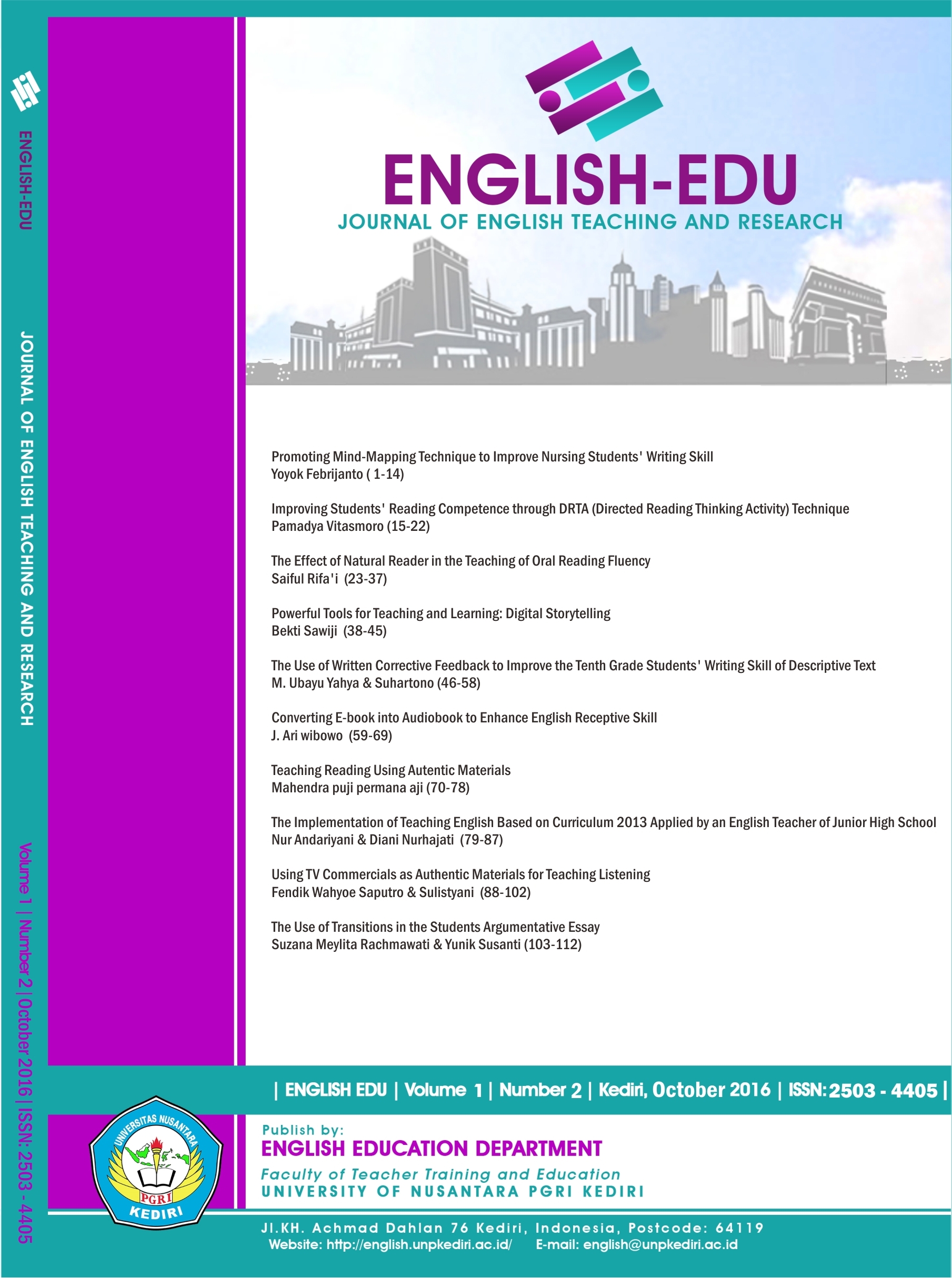THE IMPLEMENTATION OF TEACHING ENGLISH BASED ON CURRICULUM 2013 APPLIED BY AN ENGLISH TEACHER OF JUNIOR HIGH SCHOOL
DOI:
https://doi.org/10.29407/jetar.v1i2.480Abstract
Curriculum 2013 has been implemented by many schools, including a junior high school at Kediri. English teachers, who implement it, must have sufficient knowledge on what to teach, how to teach, and how to assess students’ competence, etc. The idea of implementing this curriculum is that graduates of school levels are able to compete with the graduates from other countries. Students should have communicative competence in English which covers four language skills. Therefore, this research aims at answering the question: “How is the implementation of teaching English based on Curriculum 2013 applied by an English teacher of junior high school at Kediri?” The subject of this research is an English teacher of junior high school at Kediri. It is a qualitative research which focused on the material development, teaching steps, and classroom management. The data was found from observation during teaching and learning process, interview the teacher, and documentation. The result showed that in teaching English the teacher developed the materials by modifying and extending the tasks based on the Richard and Harmer’s theory. Then, in delivering the materials, the teacher tried to implement the scientific approach, although the application was different from the concept from the scientific approach proposed by the government. Furthermore, the teacher also managed the classroom well by applying group works, and setting the comfortable condition in the class during teaching and learning process.
Key words: teaching English, Curriculum 2013, materials development, teaching steps, classroom management.
Downloads
Downloads
Published
Issue
Section
License
Authors who publish with this journal agree to the following terms:
- Copyright on any article is retained by the author(s).
- The author grants the journal, the right of first publication with the work simultaneously licensed under a Creative Commons Attribution License that allows others to share the work with an acknowledgment of the work’s authorship and initial publication in this journal.
- Authors are able to enter into separate, additional contractual arrangements for the non-exclusive distribution of the journal’s published version of the work (e.g., post it to an institutional repository or publish it in a book), with an acknowledgment of its initial publication in this journal.
- Authors are permitted and encouraged to post their work online (e.g., in institutional repositories or on their website) prior to and during the submission process, as it can lead to productive exchanges, as well as earlier and greater citation of published work.
- The article and any associated published material is distributed under the Creative Commons Attribution-ShareAlike 4.0 International License








 Article template
Article template



